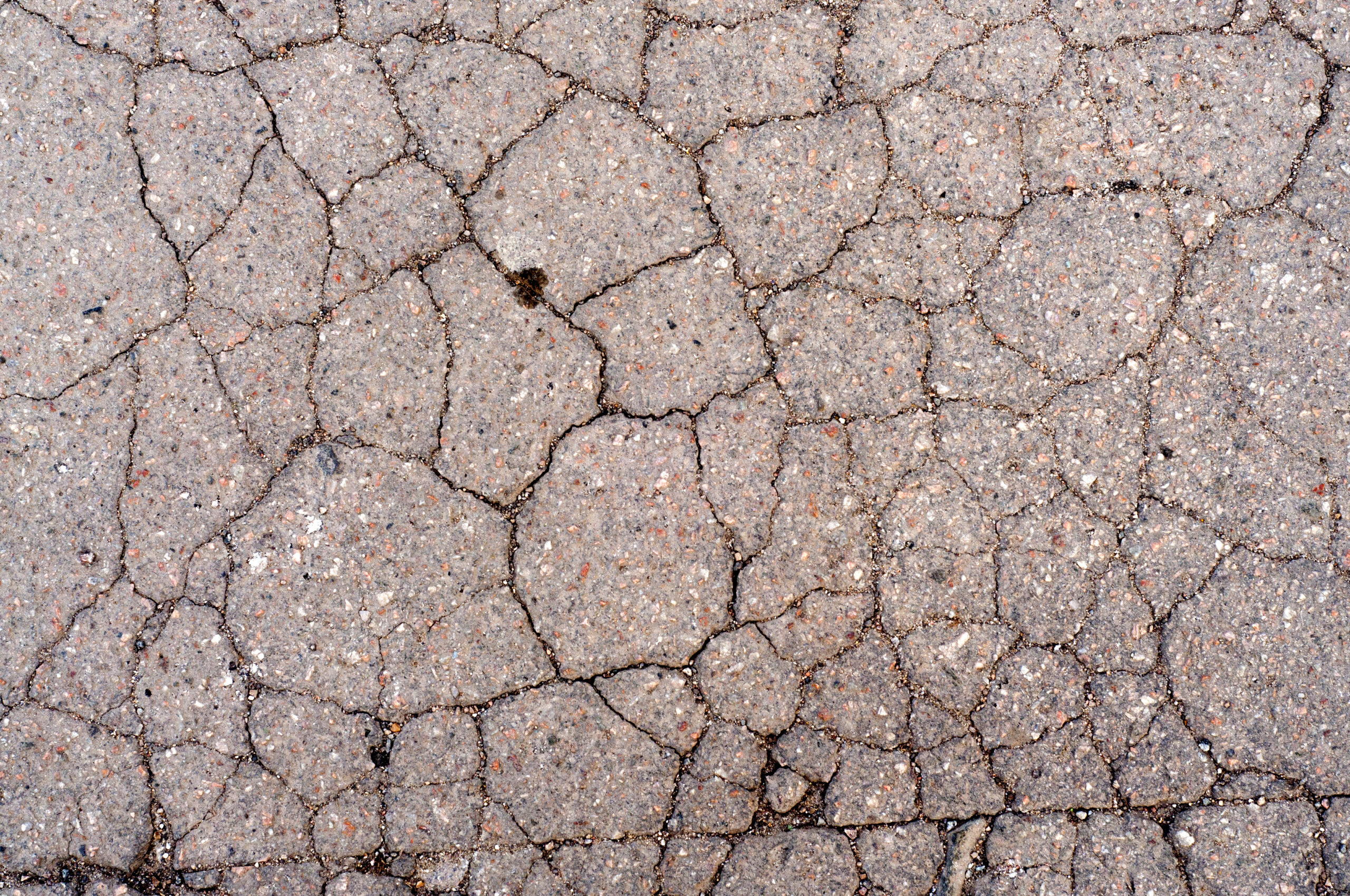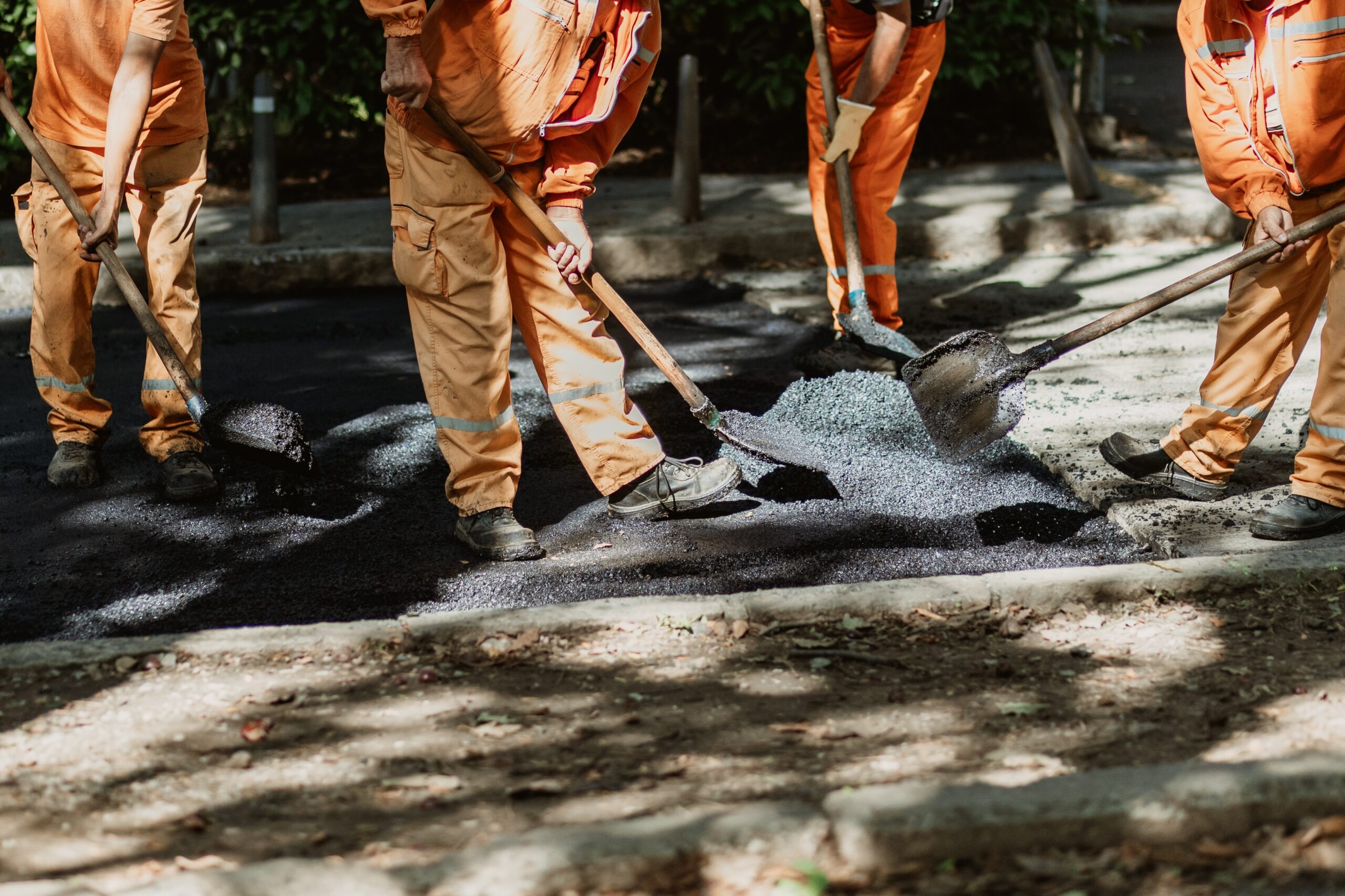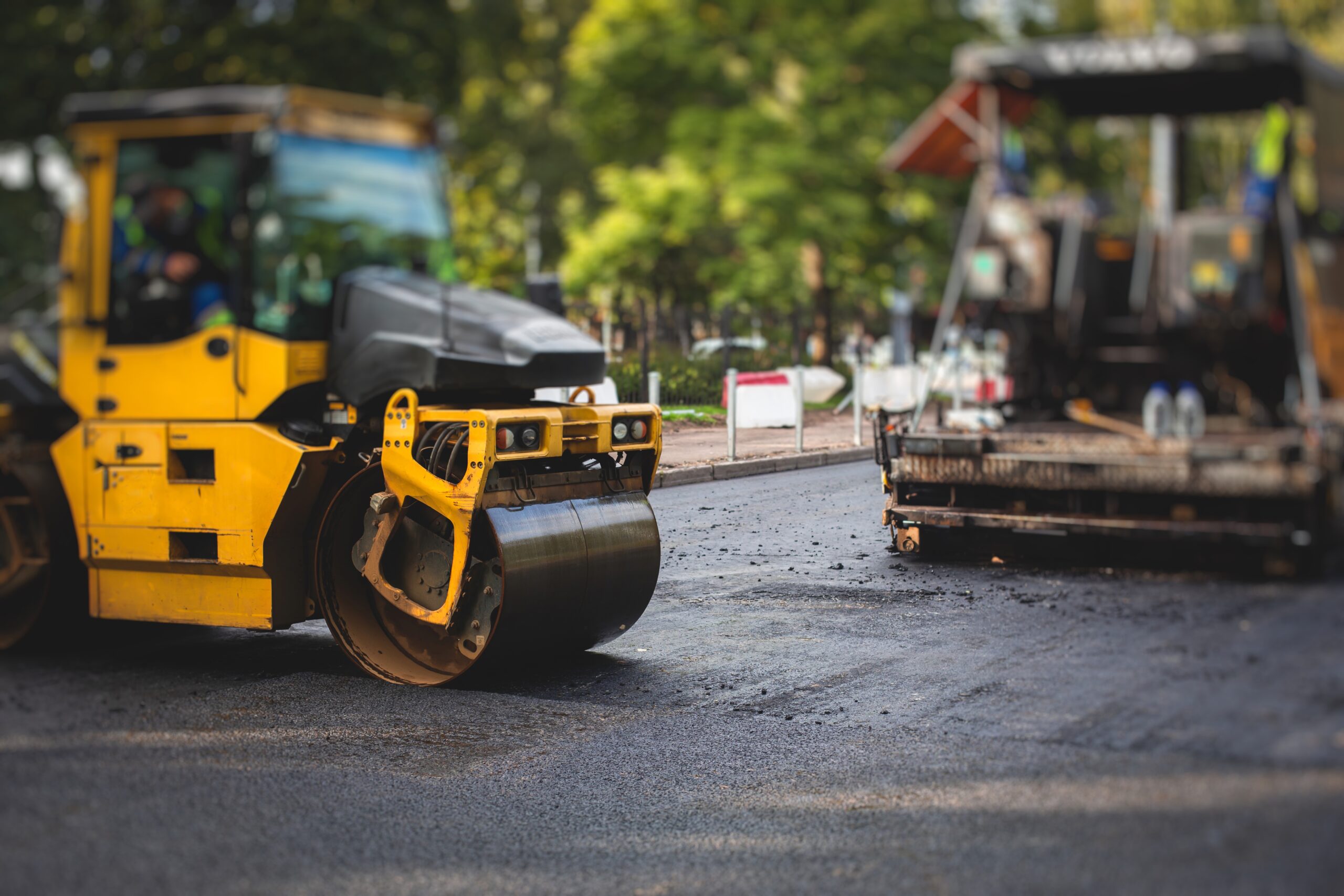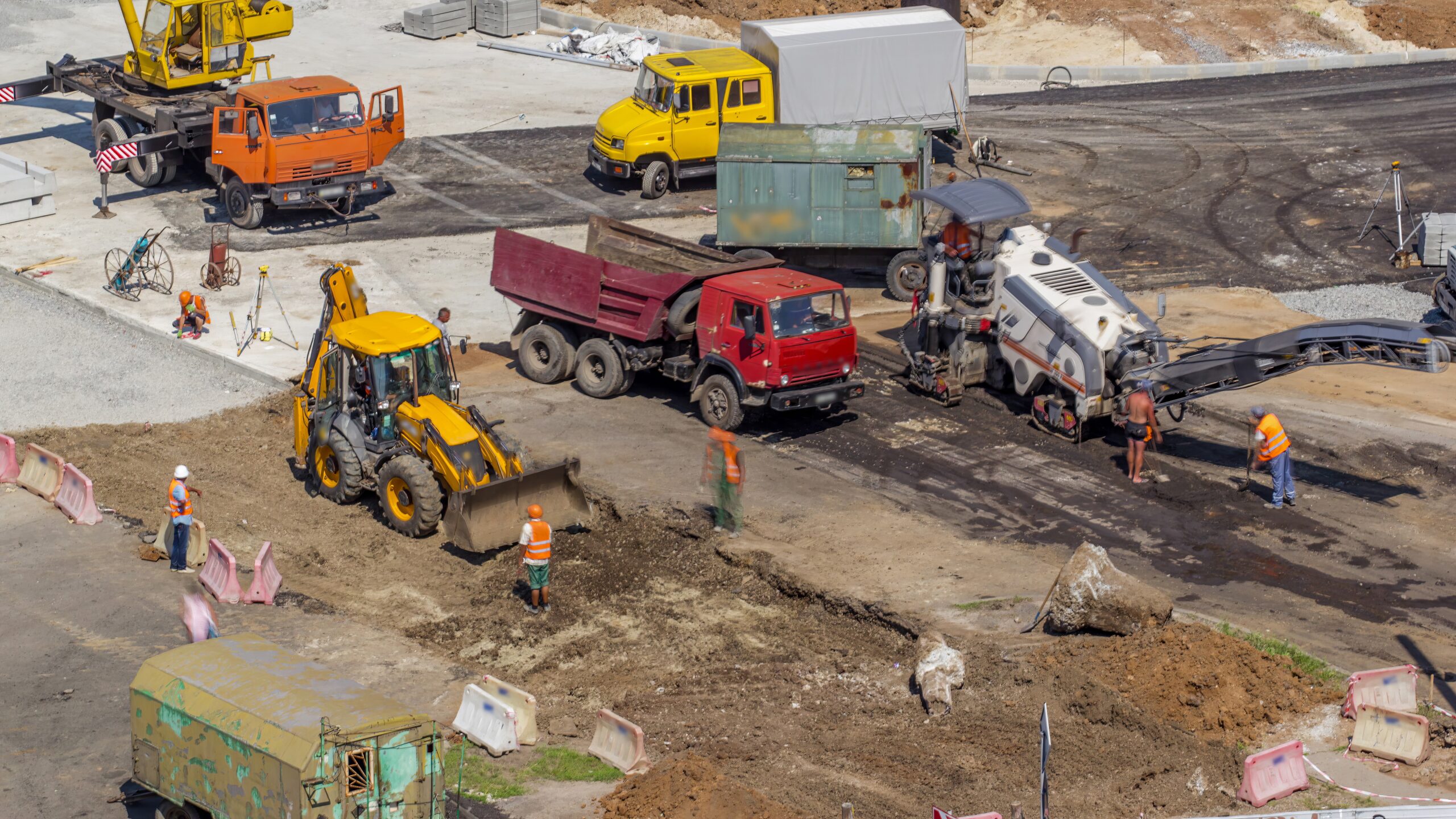
Most property owners assume that asphalt damage originates from heavy trucks, daily wear and tear, or harsh weather conditions. And while those factors do take a toll, the most persistent and underestimated threat is something much simpler: water. When rain falls or snow melts, that water needs somewhere to go. If your pavement isn’t graded or drained correctly, the water doesn’t just sit on the surface; it seeps beneath it.
Over time, that hidden moisture begins to erode the base layer, softening the structure and quietly weakening everything from below. What starts as a minor puddle can develop into wide cracks and deep potholes, potentially leading to expensive structural failure, which is why proper drainage is crucial for asphalt longevity.
In this blog, you’ll learn how improper drainage leads to pavement cracking, how to recognize early warning signs, and what actions can keep your surface structurally sound for years to come.
Water’s Impact on Asphalt Pavement
Asphalt is designed to be rigid and flexible, but it is not invincible. When water collects or flows improperly over your property, it begins to break down the structure from the inside out. The damage may not be immediately apparent, but its long-term consequences are both visible and costly. Over time, the structural integrity of the pavement is compromised, leading to extensive cracking, potholes, and potentially expensive repairs or even full replacement.
What Happens When Water Gets In
- Surface erosion begins when water remains on the pavement for an extended period. It wears away the protective surface, exposing small cracks.
- Seepage through cracks allows water to reach the base layer, where it weakens the foundation of your pavement.
- Freeze-thaw cycles expand existing cracks in colder climates. Water that enters the asphalt during the day freezes at night, widening the gaps between the asphalt.
- Sub-base softening occurs when water sits underneath the surface. This causes dips, depressions, and eventually potholes.
Each of these effects accelerates pavement aging, resulting in more severe cracking. Once the base is compromised, even minor surface damage can escalate into a major structural issue, giving you the signs your asphalt needs immediate repair.
Why Drainage Design Matters
Your pavement can only withstand water if the drainage system was designed adequately during construction. Without the proper slope, grading, or outlet points, water will pool in low areas and soak into the surface. Good drainage isn’t just about removing water; it’s about protecting your investment.
Signs of Drainage-Related Cracking
Recognizing the early signs of poor drainage can help you identify issues before they escalate. Cracks often begin small, but if they are tied to water damage, they can spread quickly and lead to costly repairs.
Key Indicators of Drainage Trouble
- Standing water or puddles that remain long after a storm
- Alligator cracking, which looks like a spider web pattern and suggests deep base failure
- Edge cracking near the perimeter, where water runoff is poorly managed
- Surface depressions or low spots that trap water
- Sinkholes or soft areas when walking or driving over the surface
These visual clues almost always point to drainage problems. If ignored, they may soon require resurfacing or full replacement. While sealcoating and patching can treat some surface issues, they won’t solve the root cause if drainage is not addressed.
Types of Cracks Caused by Water
Not all cracks are created equal. Some are caused by aging or load stress, while others form directly from poor water management. Understanding the types of cracks associated with drainage helps you determine the most suitable repair strategy, often distinguishing between crack sealing vs patching which repair is better.
Common Water-Related Cracks
- Alligator Cracks
These interconnected cracks resemble scales or a web. They signal that water has reached the base and caused structural failure. - Longitudinal Cracks
These run parallel to the centerline of the pavement. They often result from poor compaction or moisture movement below the surface. - Transverse Cracks
These cracks often appear across the pavement and are frequently caused by temperature fluctuations, but water infiltration can exacerbate them. - Edge Cracks
Found along the edges of pavement, these occur when water runoff isn’t managed and seeps into the shoulder or soft ground. - Slippage Cracks
These crescent-shaped cracks suggest that water has compromised the bond between pavement layers.
Each of these cracks needs a different repair approach. However, more importantly, if drainage is not corrected, the cracks will return, even after they have been filled or patched.
How to Prevent Drainage Damage
Preventing drainage-related damage starts with understanding how your lot manages water. Even minor upgrades or maintenance adjustments can dramatically reduce the risk of cracking. By taking proactive steps, you can significantly mitigate the impact of poor drainage on your asphalt. If your lot is already showing signs of trouble, acting early can still save you from full replacement.
Best Practices to Protect Asphalt
- Inspect grading and slope regularly to ensure water flows away from the pavement and toward drains or swales.
- Clean out catch basins and drains to prevent blockages that lead to water pooling.
- Sealcoat every 2 to 4 years to maintain a protective barrier against water infiltration.
- Crack seal minor gaps before they allow moisture to reach the base layer.
- Repair drainage features, such as curbs, gutters, and trench drains, as soon as damage is noticed.
- Avoid over-watering nearby landscaping that may cause extra moisture to seep onto the pavement.
Proper drainage isn’t just about gutters and pipes. It’s a complete system that includes your grading, landscaping, pavement materials, and preventive maintenance plan. This is integral to understanding why proper drainage is crucial for asphalt longevity.
Choosing a Contractor Who Understands Drainage
Hiring the right contractor is crucial when addressing drainage-related cracking. Many services offer quick fixes, but without addressing drainage issues, repairs won’t last. The contractor you choose should understand how drainage interacts with your pavement structure. By selecting a knowledgeable and experienced contractor, you can be confident that your pavement will be maintained appropriately.
What to Look for in a Contractor
- Experience with drainage diagnostics as part of asphalt assessment
- Knowledge of regional soil and water movement
- Ability to redesign or improve surface grading
- Use of high-quality materials for long-term protection
- Willingness to explain the root cause of cracking before quoting work
A contractor who focuses only on the cracks, rather than addressing the water issue, is not providing a long-term solution. Protect your budget by working with someone who sees the whole picture.
Frequently Asked Questions
How does poor drainage cause asphalt to crack?
Poor drainage allows water to settle on or beneath the asphalt surface. This trapped moisture weakens the pavement structure by softening the sub-base and eroding support materials. As the foundation becomes unstable, the asphalt loses its strength, leading to surface fatigue, cracking, and eventual pothole formation.
What types of cracks are most commonly linked to drainage problems?
Edge cracks are among the most common signs of drainage failure. These form along the sides of the pavement where water runoff isn’t adequately controlled. Other cracks or potholes often appear in low spots or flat areas with poor grading or blocked drainage, where water tends to collect and soak through the surface.
Why is water infiltration so damaging to asphalt?
Water that enters through small cracks or gaps can reach the lower layers of pavement. In colder climates, this moisture freezes and expands, putting pressure on the surrounding materials. When it thaws, it leaves voids behind. Repeated freeze-thaw cycles break down the pavement from the inside, accelerating cracking and structural damage.
What are the long-term effects of ignoring drainage issues?
Neglecting drainage problems leads to faster pavement breakdown. Over time, more cracks appear, potholes widen, and the surface becomes uneven. Chronic water exposure also reduces the pavement’s load-bearing strength, eventually requiring costly structural repairs or complete replacement.
How can proper drainage prevent asphalt cracking?
Effective drainage design ensures that water flows away from the pavement, rather than pooling on it. Techniques like sloped grading, catch basins, sub-drains, and edge reinforcement help control runoff and prevent water from weakening the asphalt. With proper drainage in place, your pavement stays stronger, safer, and lasts significantly longer.
Drainage Is a Structural Priority
Poor drainage is one of the leading causes of premature asphalt failure. While it may begin with surface cracks or puddles, the long-term impact is profound and costly. Every property owner should understand that water is not just an aesthetic problem; it’s a structural one.
By identifying early warning signs, understanding the different types of cracks, and collaborating with qualified professionals, you can effectively protect your pavement from water damage. Maintenance is essential, but drainage is foundational. Addressing both ensures your lot remains safe, functional, and attractive for years to come.
Asphalt Coatings Company offers comprehensive asphalt assessments, drainage correction, and repair solutions designed to protect your property and extend the life of your pavement. Contact our team today to schedule a site evaluation and get expert guidance on the next steps.



